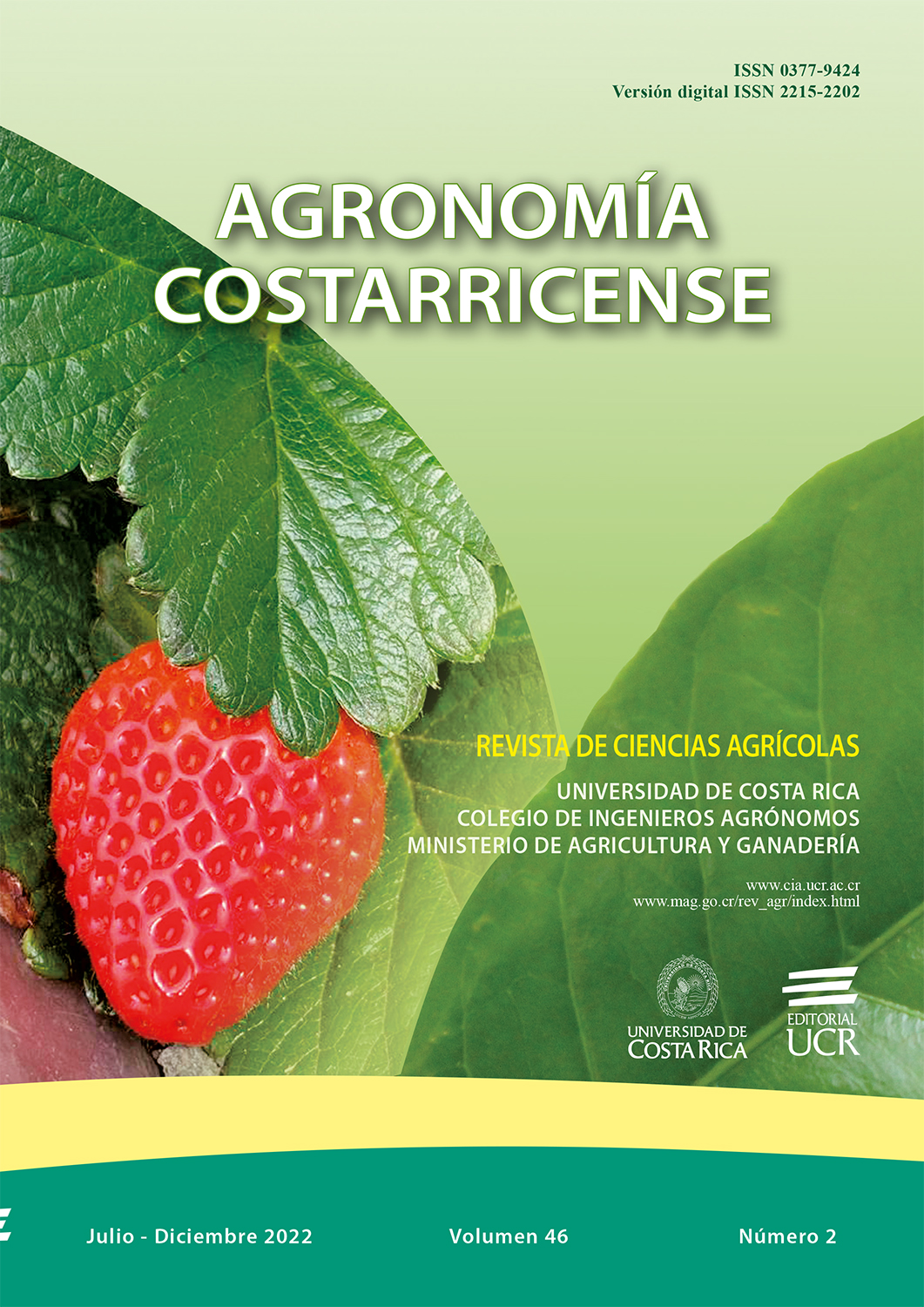Abstract
Introduction. Strawberries are important in Costa Rica due to their high demand as fresh fruit and for making jams. In 2015, reports of plant death began, presumably associated with soil-dwelling fungal complexes. The symptoms were redness and necrosis of leaves, crowns, and roots, then the collapse of the plants. With losses of up to 90% in new plantations. Objective. To determine the pathogenicity of fungi associated with diseased strawberry plants and to describe the micromorphology of the pathosystem. Materials and methods. Diseased Festival variety plants were collected, and isolations were made from crown and root. The recovered morphotypes were classified, three were chosen for sequencing of the internal transcribed spacer of nuclear ribosomal DNA (nrDNA ITS) and execution of Koch’s Postulates, with 3.5 x 105 conidia/ml inoculated in alfalfa granules. The plants were kept for 19 weeks in a protected environment. Then, reisolation and sequencing of the inoculated fungi was performed, and the pathosystem was described by means of scanning electron microscopy. Results. Ten isolates of crown and 22 root fungi were obtained, which were classified into 9 morphotypes. hree were chosen, which, according to the ITS, were in the operational taxonomic units Fusarium oxysporum, Neonectria/Dactylonectria and Sydowia polyspora. The 100% incidence was recorded in all the inoculated plants and the symptoms coincided with those in the field, while the control remained healthy. The similarity percentages of the ITS sequences of the fungi isolated from diseased plants, from the field, and of the fungi recovered from the pathogenicity test, were > 99%. At the ultrastructural level, it was observed that the roots lose the epidermis and are colonized by fungi. Conclusion. The inoculated fungi were pathogenic to Festival variety strawberry plants, they had the ability to damage the root epidermis and multiply internally.
##plugins.facebook.comentarios##

This work is licensed under a Creative Commons Attribution-NonCommercial-NoDerivatives 4.0 International License.
Copyright (c) 2022 Agronomía Costarricense


